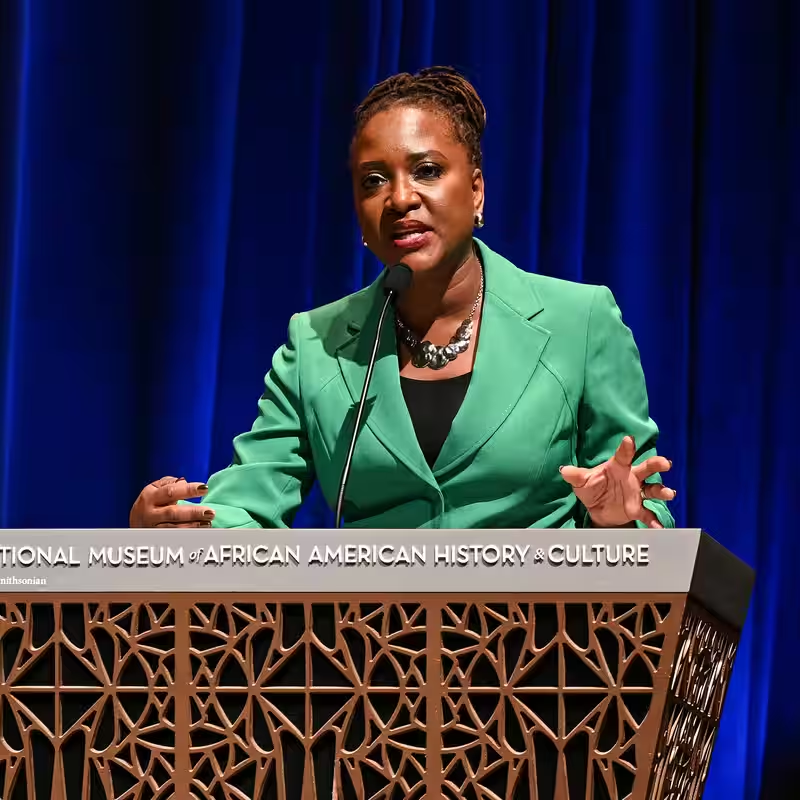As the U.S. Supreme Court reconsiders the future of the Voting Rights Act in Louisiana v. Callais, the legal battle hinges not just on constitutional theory—but on the lawyers arguing it. From a first-time advocate defending Black voters to Trump-era appointees challenging race-conscious redistricting, the courtroom is filled with legal heavyweights whose arguments could reshape American democracy.
Who Are the Lawyers in the Louisiana Voting Rights Case?
The case centers on whether Louisiana’s creation of a second majority-Black congressional district violates the U.S. Constitution. But behind the legal briefs are real people—seasoned litigators, civil rights champions, and political operatives—each with distinct agendas and courtroom styles.
Janai Nelson – NAACP Legal Defense Fund (Defending the Map)
Making her Supreme Court debut, Janai Nelson, president of the NAACP Legal Defense and Educational Fund, is arguing on behalf of Black Louisiana voters who support the redrawn map. A former law professor and voting rights scholar, Nelson has spent her career fighting voter suppression.
Her core message: Section 2 of the Voting Rights Act remains essential. “We only have the diversity we see across the South because of litigation brought under this law,” she told justices during oral arguments.
J. Benjamin Aguiñaga – Louisiana Solicitor General (Now Opposing the Map)
In a surprising twist, Louisiana’s own solicitor general, J. Benjamin Aguiñaga, is no longer defending the state’s map. After initially supporting it, Aguiñaga has switched sides—now aligning with white plaintiffs who claim the district is an unconstitutional racial gerrymander.
This shift reflects a broader pivot by Louisiana’s Republican leadership, which now argues that race-based redistricting under Section 2 is “unworkable and unconstitutional.” Aguiñaga, who previously argued before the Court in social media and religious liberty cases, brings a polished, conservative legal style to the podium.
Edward D. Greim – Counsel for White Voters (Challenging the Map)
Representing a dozen white Louisiana voters who sued over the new district, Edward D. Greim of Graves Garrett Greim in Kansas City returns for his second appearance in this case. He contends the map “subjects citizens to unlawful, intentional discrimination based on race.”
Greim’s argument leans heavily on precedent like Shaw v. Reno (1993), which warned that race-based districts “bear an uncomfortable resemblance to political apartheid.”
Hashim M. Mooppan – Trump Administration (Supporting Plaintiffs)
Arguing on behalf of the Trump Justice Department, Principal Deputy Solicitor General Hashim M. Mooppan is backing the white voters and Louisiana’s new legal stance. Mooppan, a frequent advocate before the Court on religious liberty and executive power cases, framed Section 2 as a relic that enforces “racial stereotyping.”
“It assumes all Black voters think alike,” he argued—a claim civil rights groups fiercely reject.
Why These Lawyers Matter
This isn’t just about legal doctrine—it’s about narrative. Nelson’s presence signals the civil rights movement’s institutional response. Aguiñaga’s reversal shows how state politics can override legal consistency. And Mooppan’s involvement ties the case directly to the Trump administration’s broader campaign against race-conscious policies.
Key Lawyers in Louisiana v. Callais
| Lawyer | Role | Position on Map | Notable Background |
|---|---|---|---|
| Janai Nelson | NAACP LDF President | Defends map | First SCOTUS appearance; voting rights expert |
| J. Benjamin Aguiñaga | Louisiana Solicitor General | Now opposes map | Formerly defended map; argued in social media cases |
| Edward D. Greim | Counsel for white voters | Opposes map | Specializes in constitutional and election law |
| Hashim M. Mooppan | Deputy SG, Trump DOJ | Opposes map | Frequent SCOTUS advocate; religious liberty focus |
A Case That Could Redefine Representation
The stakes couldn’t be higher. If the Court sides with Greim, Mooppan, and Aguiñaga, Section 2 of the Voting Rights Act—the last major enforcement tool for minority voting rights—could be gutted. That would jeopardize majority-minority districts across the South, potentially flipping up to a dozen House seats from blue to red.
But if Nelson prevails, it would reaffirm a 2023 precedent in the Alabama redistricting case and preserve a pathway for communities of color to gain fair representation.
As Justice Elena Kagan noted during arguments: “This isn’t about the past. It’s about whether minority voters today have an equal shot.”
With reargument rare and the Court’s conservative supermajority signaling skepticism, all eyes are on these four lawyers—and the words they choose to defend or dismantle a cornerstone of civil rights law.




